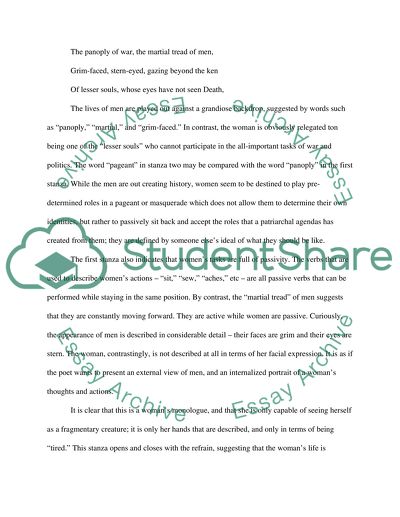Cite this document
(Alice Dunbar-Nelsons I Sit and Sew Book Report/Review, n.d.)
Alice Dunbar-Nelsons I Sit and Sew Book Report/Review. Retrieved from https://studentshare.org/literature/1528903-alice-dunbarnelsons-poem-i-sit-and-sew
Alice Dunbar-Nelsons I Sit and Sew Book Report/Review. Retrieved from https://studentshare.org/literature/1528903-alice-dunbarnelsons-poem-i-sit-and-sew
(Alice Dunbar-Nelsons I Sit and Sew Book Report/Review)
Alice Dunbar-Nelsons I Sit and Sew Book Report/Review. https://studentshare.org/literature/1528903-alice-dunbarnelsons-poem-i-sit-and-sew.
Alice Dunbar-Nelsons I Sit and Sew Book Report/Review. https://studentshare.org/literature/1528903-alice-dunbarnelsons-poem-i-sit-and-sew.
“Alice Dunbar-Nelsons I Sit and Sew Book Report/Review”, n.d. https://studentshare.org/literature/1528903-alice-dunbarnelsons-poem-i-sit-and-sew.


